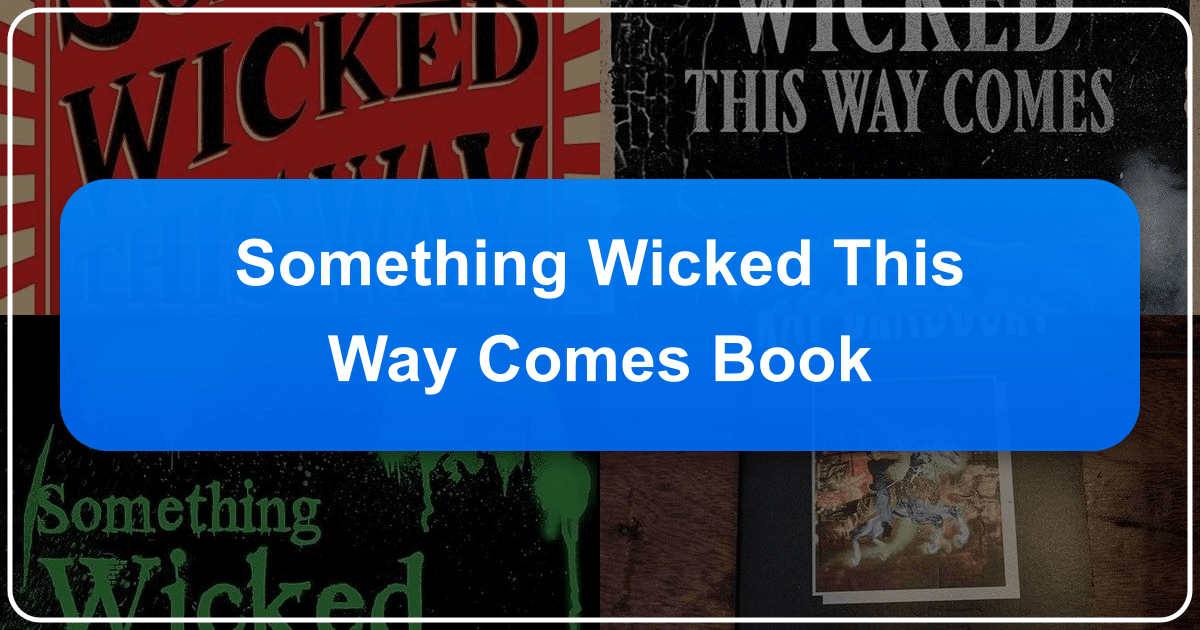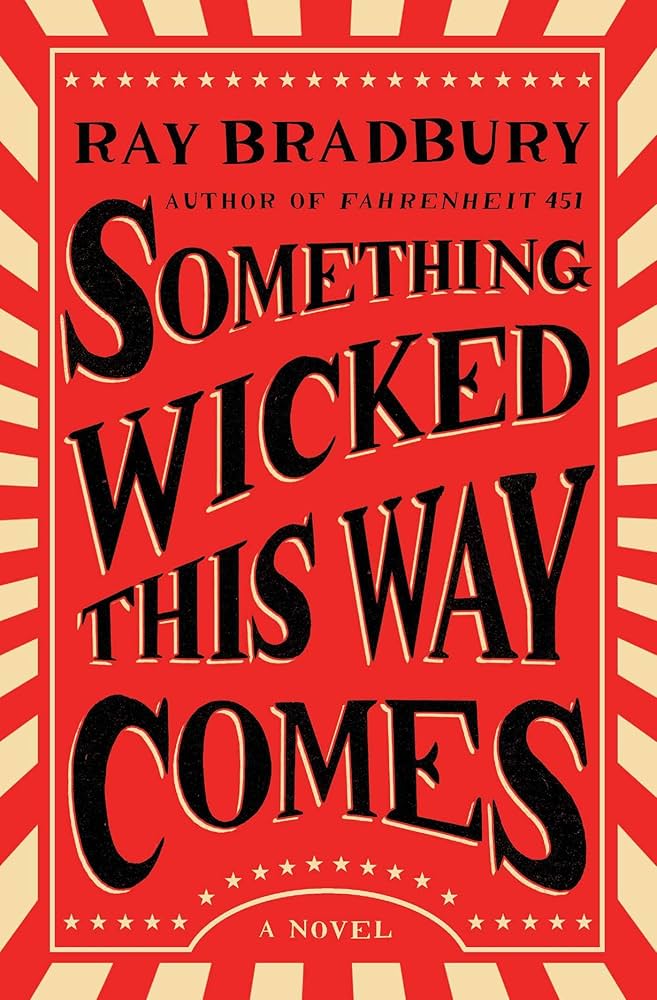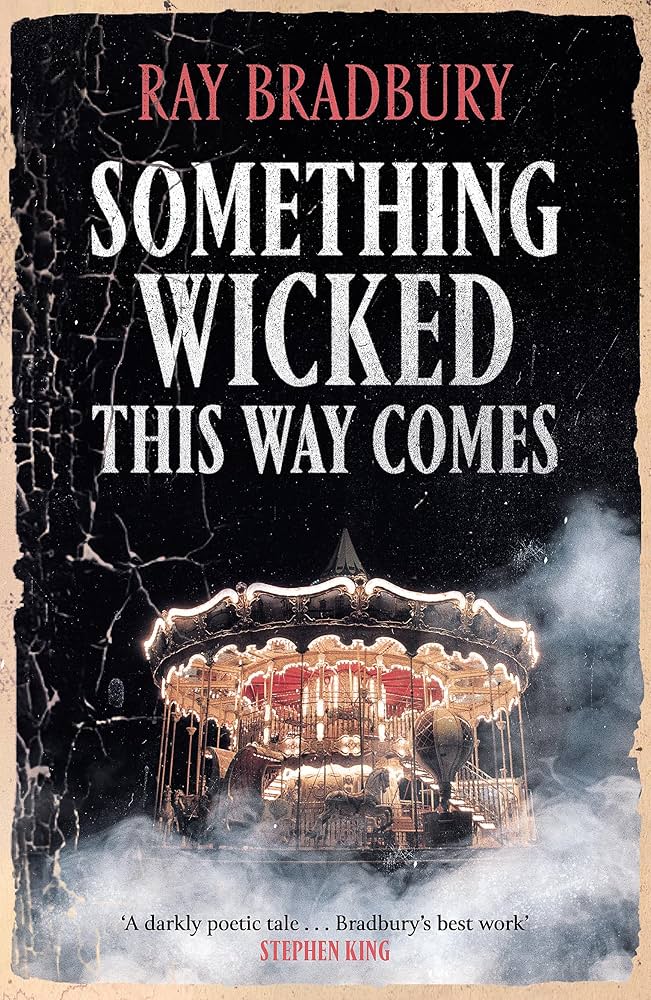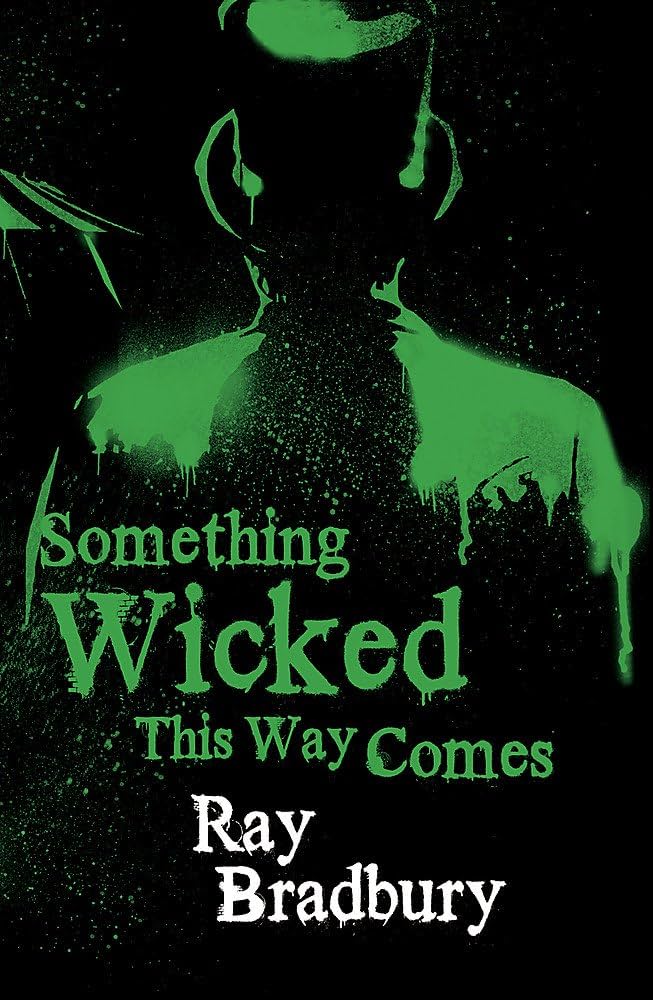Something Wicked This Way Comes: A Deep Dive into Ray Bradbury's Masterpiece

Ray Bradbury’s Something Wicked This Way Comes, published in 1962, stands as a chilling and captivating exploration of childhood, adolescence, temptation, and the enduring battle between good and evil. This dark fantasy novel, the second in Bradbury’s Green Town Trilogy, transcends its genre classifications, resonating with readers across generations due to its evocative prose, memorable characters, and timeless themes. This in-depth analysis will explore Something Wicked This Way Comes through the lens of various key aspects: its genre and literary merit, its compelling characters, the profound life lessons it imparts, its enduring cultural impact, and its remarkable adaptations across different media.

Genre and Literary Analysis
Something Wicked This Way Comes defies simple categorization. While often labeled as horror or dark fantasy, it seamlessly blends elements of both genres with coming-of-age fiction and philosophical musings. The novel’s setting, the fictional Green Town, Illinois, reminiscent of Bradbury’s own Waukegan, evokes a strong sense of Americana, a nostalgic backdrop against which the supernatural elements unfold. The arrival of Cooger & Dark’s Pandemonium Shadow Show, a malevolent carnival, disrupts the town’s quiet rhythm, introducing a palpable sense of unease and dread.
Bradbury’s masterful prose is a significant contributor to the novel’s unique atmosphere. His descriptive language is rich with poetic imagery and evocative metaphors, painting vivid pictures of the autumnal setting, the eerie carnival, and the internal struggles of the characters. While this lyrical style enhances the novel’s emotional depth and atmosphere, some readers find it occasionally dense or overly stylized, potentially hindering the narrative flow. However, this stylistic choice reflects the adolescent perspectives of the protagonists, Will and Jim, whose perceptions of the world are still shaped by wonder and imagination, often blurring the lines between reality and fantasy.
The novel’s plot unfolds linearly, following the progression of events as the carnival’s sinister influence affects the townspeople. The narrative structure allows for a gradual escalation of tension, building to a powerful climax where the forces of good and evil confront each other. The resolution, while often criticized for its overtly optimistic tone, offers a powerful message about the triumph of human resilience and the power of positive emotions to overcome darkness.

Educational Value and Life Lessons
Beyond its entertainment value, Something Wicked This Way Comes offers rich opportunities for reflection on various aspects of the human experience. The novel acts as an allegory for the transition from childhood to adulthood, exploring the anxieties, temptations, and challenges inherent in this transformative phase. The characters’ experiences serve as cautionary tales, highlighting the potential consequences of succumbing to selfish desires and the importance of maintaining one’s moral compass amidst alluring temptations.
The relationship between Will and Jim exemplifies the power and complexities of friendship. Their bond serves as a central theme, highlighting the unwavering loyalty, support, and mutual growth that a true friendship can provide. The dynamics between Will and his father, Charles Halloway, illustrate the challenges and rewards of father-son relationships, especially as they navigate the complexities of aging and communication. Charles Halloway’s personal struggle with aging offers profound insight into the fear of mortality and the importance of embracing life’s fleeting moments.
Cultural Impact and Adaptations

Something Wicked This Way Comes has left an undeniable mark on popular culture. Its themes of temptation, the power of belief, and the struggle against evil have inspired numerous authors, including Stephen King and Neil Gaiman, both of whom have explicitly cited Bradbury’s influence. The novel’s exploration of a sinister carnival has resonated across various works, creating a recurring motif within fantasy and horror literature. The image of Mr. Dark, the enigmatic carnival master, has become a memorable villain archetype, highlighting the deceptive nature of tempting evils.
The novel’s enduring popularity has led to several adaptations across different media. The 1983 film adaptation, while having undergone significant changes, retains the novel’s central themes and atmosphere, further cementing the story’s place in popular culture. The numerous stage and radio adaptations, and even a musical, showcase the versatility and adaptability of Bradbury’s narrative, allowing audiences to experience the story in diverse and engaging formats.
Characters: A Study in Contrasts
The novel features a compelling cast of characters, each uniquely crafted and embodying specific aspects of human nature. The protagonists, Will and Jim, are presented as contrasting yet complementary figures. Will, the cautious and thoughtful one, represents reason and prudence, while Jim, impulsive and adventurous, embodies recklessness and desire. Their contrasting personalities create a dynamic duo, highlighting the strengths and vulnerabilities of different approaches to life.
Will’s father, Charles Halloway, serves as a pivotal character, embodying the conflict between clinging to the past and embracing the present. His fear of aging, and his initial emotional distance from his son, provides a relatable element to the narrative. Charles’s transformation throughout the novel, from a quiet and melancholic individual to a courageous and assertive protector, underscores the power of personal growth and resilience.
Mr. Dark, the carnival’s master, is one of literature’s most compelling villains. His ambiguous nature, combined with his ability to exploit human desires, makes him a truly memorable antagonist. Mr. Dark’s power stems from his capacity to manipulate people’s deepest fears and desires, underscoring the seductive allure of evil. The supporting characters, such as the Dust Witch, Tom Fury/the Dwarf, and the Skeleton, further enrich the carnival’s atmosphere and represent the various forms temptation can take.
Libraries and Archives: A Reflection of Knowledge
Bradbury’s deep appreciation for libraries and the power of literature is evident throughout Something Wicked This Way Comes. The town library, where Charles Halloway works, is not just a setting but a symbol of knowledge, wisdom, and the enduring human spirit. The library’s vast collection of books represents humanity’s accumulated knowledge, while its quiet atmosphere serves as a sanctuary where the characters find solace and enlightenment. The library stands in direct contrast to the deceptive and transient nature of the carnival, underscoring the enduring value of knowledge against fleeting temptations.
The references to books and literature within the narrative further emphasize the power of stories to shape our lives and illuminate the human condition. The library becomes a sanctuary against the evil of the carnival, showcasing the power of knowledge and wisdom. This highlights Bradbury’s deep personal connection to libraries and storytelling, a connection that is subtly conveyed throughout his writing.
Conclusion: A Timeless Classic
Something Wicked This Way Comes remains a powerful and thought-provoking novel, appealing to readers of various ages and backgrounds. Its masterful blending of fantasy and horror, its unforgettable characters, its exploration of profound life lessons, and its enduring cultural impact secure its place as a timeless classic. Bradbury’s unique style of writing, while sometimes challenging, only enhances the novel’s imaginative power and profound message. Whether you are a seasoned reader of fantasy and horror or a newcomer to Bradbury’s work, Something Wicked This Way Comes is a reading experience that will resonate long after you’ve turned the final page. Its themes remain relevant and deeply meaningful in our contemporary world.